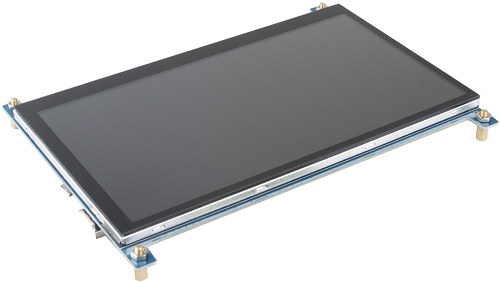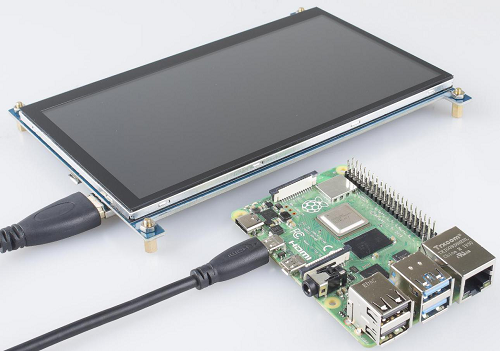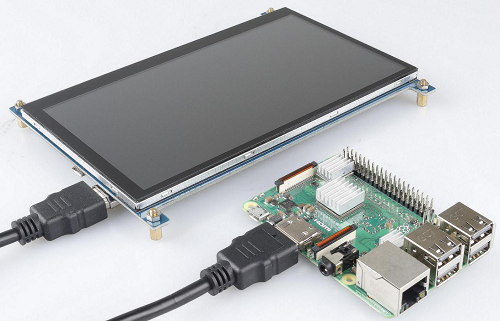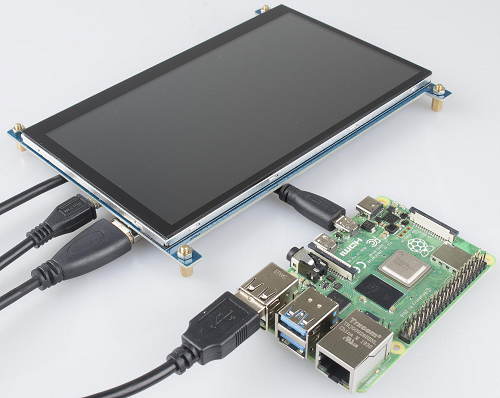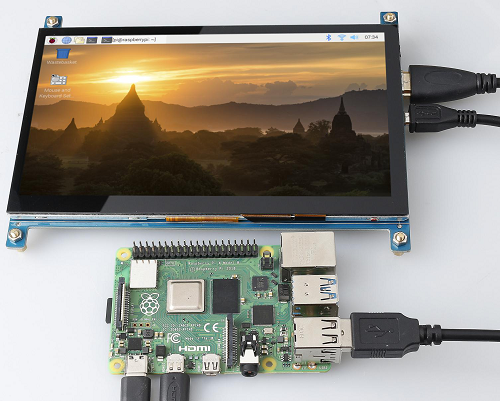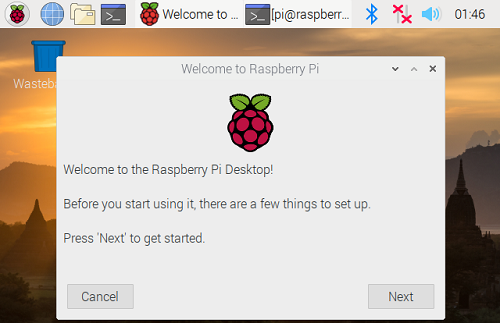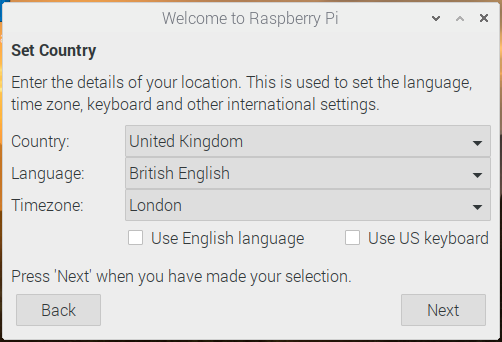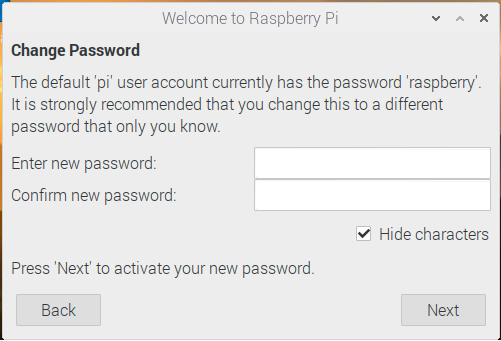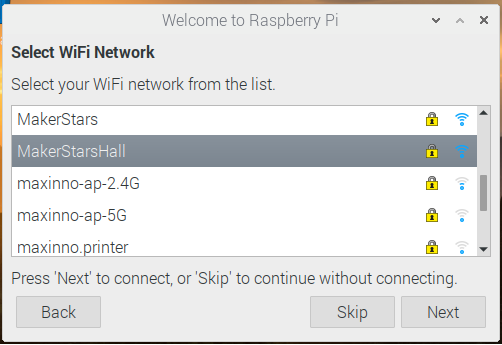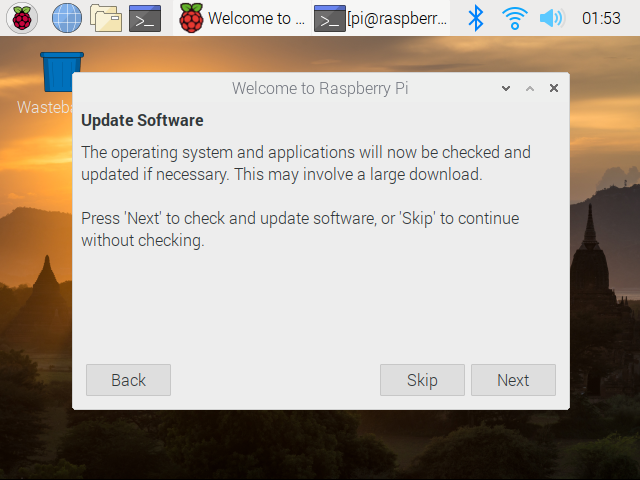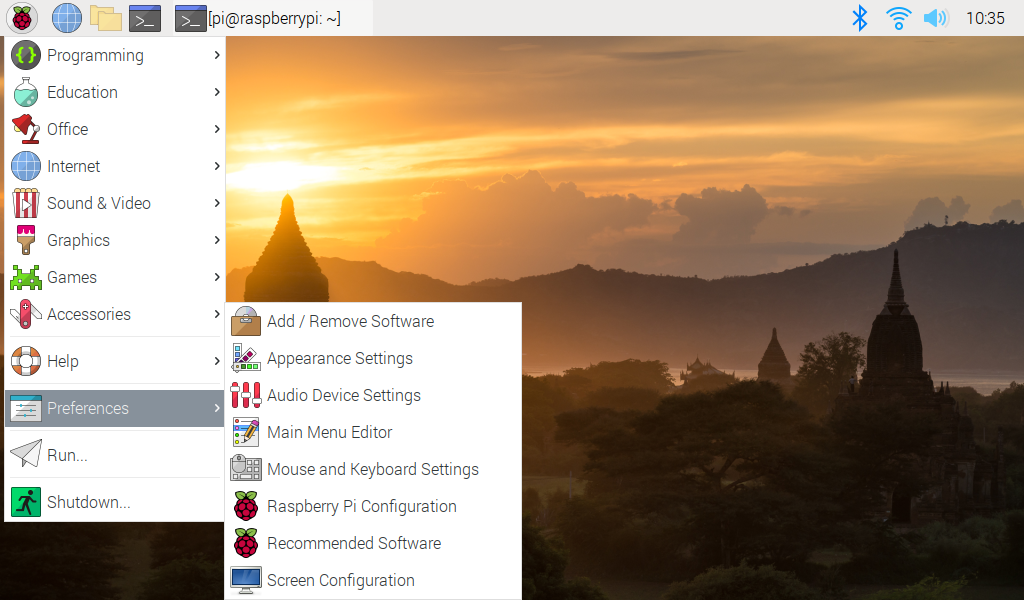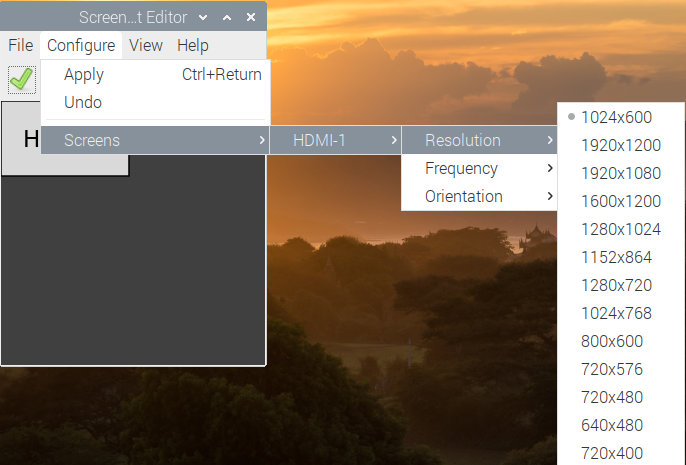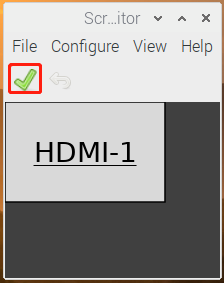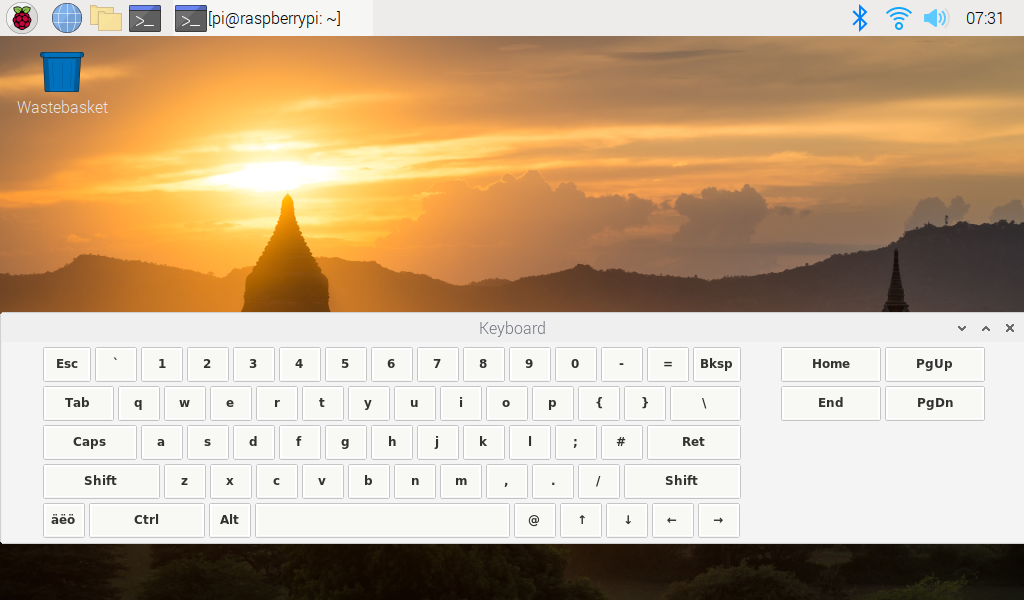Difference between revisions of "7 Inch DIY Touch Screen"
| Line 140: | Line 140: | ||
[[File:图片16.png]]<br> | [[File:图片16.png]]<br> | ||
| − | =''' | + | ='''Install the Virtual Keyboard'''= |
Open a terminal and run the command:<br> | Open a terminal and run the command:<br> | ||
Revision as of 09:51, 8 November 2019
Contents
Overview
Screen: 7-inch Touch Screen
Resolution: 1024 x 600 (16:9)
Input Signal: HDMI
Module Size: 165.30(W) x121(H) x 7.75(T)
Active Area: 154.21(mm) x 85.92(mm).
This Raspberry Pi touchscreen has HD 1024 x 600 resolution, 16.7M (8bit) color numbers, giving high color restoration display. Rectangular ratio 16:9 displays format conversion. IPS 170° full wide visual angle gives you a crystal-clear viewing experience.
It supports Raspbian/Win7/Win8/Win10(Plug and play), Android/Linux (need to be configured first).
Equipped with Micro USB and HDMI port support, the screen can be connected to the device via HDMI interface and be powered via USB. Achieving touch function powered by USB doesn’t need power cord or drive-free.
Burn the System to TF Card
Note:
- Do not install the Raspbian system by means of NOOBS, otherwise there appears touch failure.
- On other displays, if you have installed the system on your Raspberry Pi by means of NOOBS, you can still use the 7-inch touch screen.
- If you have already installed the system, you can directly skip this chapter. Turn to next chapter to refer to Connect the Raspberry Pi and Screen, and you can get to use the 7-inch touch screen.
Step 1
Prepare the tool of image burning. Here we use the Etcher. You can download the software from the link:https://www.balena.io/etcher/
Step 2
Download the complete image on the official website by clicking this link: https://www.raspberrypi.org/downloads/raspbian/.
There are three different kinds of Raspbian Stretches available, among which the Raspbian Stretch with desktop and recommended software will be the best choice if you have no other special requirements.
Step 3
Unzip the package downloaded and you will see the xxxx-xx-xx-raspbian-stretch.img file inside.
- Note: DO NOT extract the file.
Step 4
With the application of Etcher, flash the image file, raspbian into the Micro SD card.
At this point, the Micro SD card pops up. Insert the Micro SD card into the Raspberry Pi.
Connect the Raspberry Pi and Screen
Take out M3 screws and M3x8+6 single-pass brass standoff to support the 7-inch touch screen.
This 7-inch touch screen is compatible with any version of the Raspberry Pi.
The kit provides 2 types of HDMI cables, of which HDMI to Micro HDMI cable applies to Raspberry Pi 4 Model B, and the other cable, HDMI to HDMI cable is suitable for Raspberry Pi 3 and the lower versions.
Connect the USB cable to Raspberry Pi.
Plug the USB power supply into a socket and connect it to your Raspberry Pi’s power port, and you may find a red LED lighting up on the Raspberry Pi, which indicates that Raspberry Pi is connected to power. As Raspberry Pi starts up (also called booting), raspberries appears in the top left-hand corner on your screen. After a few seconds, the Raspberry Pi Desktop will appear.
Set up the Raspberry Pi Desktop
When you start your Raspberry Pi for the first time, the Welcome to Raspberry Pi application will pop up and guide you through the initial setup. Click Next to start the setup.
Set your Country, Language, and Timezone, then click Next again.
Enter a new password for your Raspberry Pi and click Next. In this step, you need to plug a keyboard into the Raspberry Pi to help you input the new password.
Connect to your WiFi network by selecting its name, entering the password, and clicking Next.
Click Next let the wizard check for updates to Raspbian and install them (this might take a little while).
Adjust the Resolution
For the Raspberry Pi 3 and the lower versions, you need reset the resolution ratio as follows. As for Raspberry Pi 4, when you start up it, the resolution is optimum. If you want to change its resolution, please refer to the next part.
- For Raspberry Pi 3 or Lower Version
Step 1: Open config.txt
sudo nano /boot/config.txt
Step 2: Modify the /boot/config.txt file
Anyway, now the file config.txt is opened.
1. Define a custom CVT mode (since Raspberry Pi uses the standard rate when 1024x600 is not included, you need to set the aspect ratio close to 16:9) and add the following lines below #hdmi_force_hotplug=1.
hdmi_cvt=1024 576 60 3 0 0 0
hdmi_cvt=<width> <height> <framerate> <aspect> <margins> <interlace>

2.Find the following lines (If there is a "#" mark at the beginning of any of the three lines, which means they are comments, delete the mark. The asterisk "*" represents the value.
hdmi_group=* hdmi_mode=* hdmi_drive=*
3.Modify the value,like this:
hdmi_group=2 hdmi_mode=87 .... hdmi_drive=2
hdmi_group=2 means DMT (Display Monitor Timings; the standard typically used by monitors)
hdmi_mode=87 indicates the resolution bit.
hdmi_drive=2 selects the Normal HDMI mode.
After the modification is done, save and exit. For more details about configuring config.txt, refer to Raspberry Pi official website:https://www.raspberrypi.org/documentation/configuration/config-txt.md.
Step 3:Reboot Raspberry Pi.
Reboot the Raspberry pi with the command sudo reboot.
sudo reboot
- For Raspberry Pi 4
1.Click the Raspberry Pi icon -> Preferences ->Screen Configuration.
2.Then choose Configure ->Screens -> HDMI-1 -> Resolution -> choose the resolution that you want.
3.After that you need to click the tick icon to save your configure.
Install the Virtual Keyboard
Open a terminal and run the command:
sudo apt-get install matchbox-keyboard
After the installation is done successfully, click Raspberry Pi icon -> Accessories -> Keyboard to open it.



